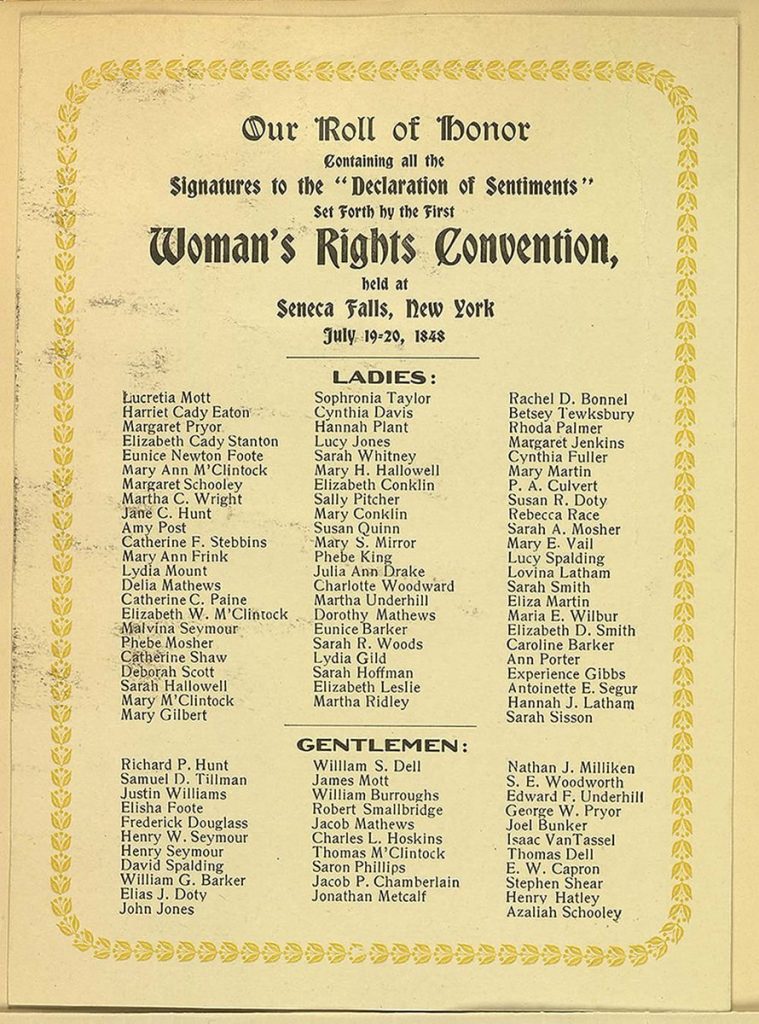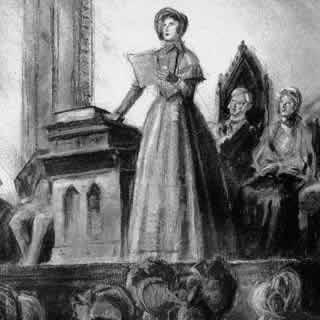The mid-19th century witnessed a wave of reformation movements in both Europe and USA. It was a rise of consciousness that covered all aspects whether be it social, economic, or political. The women equal rights movements were amongst the most prominent movements at the time due to the sensibility of their matter. The Declaration of Sentiment that was held in Seneca Falls in New York signals the first women’s rights convention.
On the 14th of July,1848, the declaration was read by Elizabeth Cady Stanton who was an abolitionist and a leading figure of the early women’s rights movement. The declaration was hoped to put an end to the historical mistreatment of women. Stanton wanted all men and women in USA to vote favorably on the eleventh resolutions. To achieve this objective, Stanton used both emotional and logical appeals in a structure and a tone similar to that of the Declaration of Independence.
First, Stanton opens with poetic language in her plea for women’s rights as an appeal to her audience’s emotions. The first three paragraphs of the declaration flow with sentiment. Stanton uses poetic and lyrical language like “when a long train of abuses and usurpations, pursuing invariably the same object, evinces a design to reduce them under absolute despotism, it is their duty to throw off such government . . . ”
Stanton here appeals to the emotions of the audience by portraying with a beautiful language the long suffrage “the long train of abuses” women had endured under the unjust rule of men (despotism). In fact, the true aim of using these poetic lines is the tone they can carry, which is of a downtrodden.
Next, Stanton states the acts of men against women that contradict with the ideals on which America was founded. the Bible and Declaration of Independence are the backbone of the American nation, and Stanton used the logical effect on her audience by mimicking what it is stated in both texts.
“That such laws as conflict, in any way, with the true and substantial happiness of woman, are contrary to the great precept of nature, and of no validity; for this is “superior in obligation to any other” “That woman is man’s equal—was intended to be so by the Creator, and the highest good of the race demands that she should be recognized as such.”
Since the so-called American ideals state that men and women are born equal, women should be treated the same as men. Stanton showed her audience to what extent the American beliefs are contradictory and hypocritical when it comes to women’s rights.
Ultimately, Stanton deliberately used a structure and a tone similar to that of the Declaration of Independence to evoke a sense of strength. The fact she maintained a formal, eloquent language throughout the entire text is due to the fact she follows the structure and the tone of the Declaration of Independence. Stanton used five sections as Jefferson did.
Furthermore, she used his figurative, connotative, then technical language such as “when in the course of human events, it becomes necessary…” But even when she breaks out from Jefferson’s pattern, she still maintains the same structure and tone which helps in empowering her credibility. Stanton, by using her eloquence talents, wanted to refute the assumption that women can’t be intellectuals.
To sum up, by using emotion, logic, and structure in her appeals, the Declaration of Sentiments is a rhetorical arsenal that Stanton fiercely used to defend women’s right.



This helps a lot